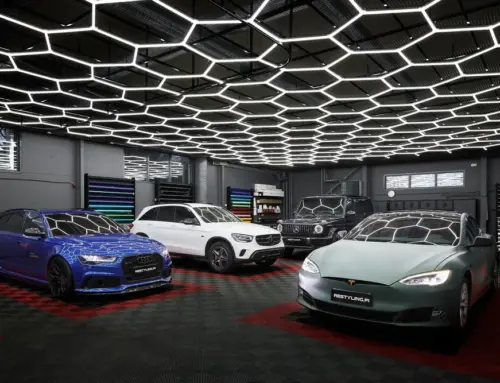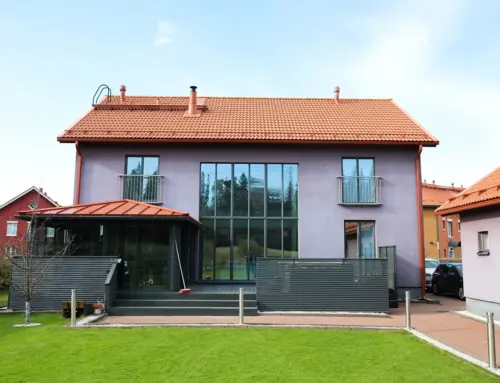Immediately after installation:
After installation, the car must not be washed for 2 weeks. If you notice that the film / tape is coming off, contact the installation company immediately.
General:
The installation has a one-year warranty and PPF materials 10 years / vinyl tapes 5-10 years.
Restyling Point does not chemically manufacture the products/raw materials it installs, such as tapes and films. We innovatively keep our eyes open for new products, test them and constantly look for the latest best chemical technology so that our customers get the highest quality products in the car care industry. The guarantee given by Restyling Point is the guarantee given by the tape / film manufacturer, which means that in case of possible complaints, the matter will be handled with the manufacturer’s representatives. Our task is to find the best possible raw material on behalf of the customer, which is currently available in our industry, and install it in the most sustainable way possible in the customer’s vehicle.
At Restyling Point, the PPF membrane is not installed according to global standards. On the contrary, it is installed in a more durable, intricate and aesthetic way than the mm standards. The membrane is maximally folded from all sides, however, within the physical limitations of the PPF membrane and the best way of installation / retention of the membrane based on our experience. The goal is to create maximum masking tape, the most durable possible installation that will last for years, and an installation method that is invisible to the eye.
The function of the PPF film and masking tape is to protect your car from external physical harm and keep the car’s paintwork looking new, 24 / 7 / 10 years. And even 16 years!
Therefore, the PPF film and the over-taping tape stand as a guard in front of your car, shouting – Bring it on!
Read more about the differences between PPF film and tape
PPF film and over taping tape take all the burdens and they have to suffer, they have to be damaged. But at the same time keeping the paint surface intact. PPF / tape is a retrofitted surface that will be damaged if necessary and the paint surface will not.
Wash:
- If the pressure of the pressure washer comes too close during the washing process, it may lift the film / tape from the edge or make a hole in a flat area. Therefore, machine washing is at your own risk and we recommend washing the car by hand.
- Direction of the pressure of the pressure washer: not towards the edges.
- The excrement contained in seagulls contains a strong chemical that corrodes the paint surface, not to mention the tape surface. Therefore, we recommend wiping the residue off the surface as soon as possible. https://www.iltalehti.fi/autot/a/2015052719760894
- Regular washing is important to keep the surface in good condition: in winter it is good to regularly wash the car using an iron and small remover. In the summer, we recommend cleaning the bow carefully of mosquitoes, so that you don’t have to polish them off. For example, in satin and matte tapes, the polishing process makes the surface shiny. The secret to a proper and effective car wash process is not high pressure but effective chemicals.
- Each type of dirt has its own chemicals, e.g. iron remover, small remover, mosquito repellent, etc. For example, you can get effective professional products from us for easy car washing.
- If you install retrofitted waxes / ceramic coatings, we recommend testing them first in a small, inconspicuous spot. If you install waxes on a matte surface, it will make the surface more shiny.
- Glossy PPF films contain their natural water-repellent surface called TopCoat, thus it may repel ceramic coatings.
- Washing is recommended in a covered area. Let cars with dark surfaces cool down in the heat before washing.
Tips and features:
- If a stone impact hits, for example, the edge of the film / tape, its adhesive surface may weaken.
- If the car has had a ceramic coating before the installation of the PPF film / tape, it may weaken the adhesion of the glue.
- If the body part of the car (e.g. the lower part of the front bumper, the side skirt, etc.) hits the snow or the ground – the film / tape attached to it may be damaged.
- If a large stone or pin hits a flat area, it may cause a visual change to the film / tape.
- Sunlight’s UV radiation may wear down dark tape colors more strongly than light ones, possibly causing the color pigment to fade.
- Too tight and abrasive seals / body parts / handles etc. due to constant movement of the car body / car use may cause friction on the PPF film / over taping on the tape, creating a wrinkled or strained area.
- When scraping windows from ice in winter, be careful not to let the scraper hit the window slats / paint surface, which could damage the aforementioned.
- Insurance in case of damage, make sure that the repainted part must not be taped or coated for 4-6 weeks after painting. Otherwise, the paint simply won’t have time to stick to the body part.
- Snow freezing on top of the car may cause strain on the open edges of the PPF film / tape.
- The amount of sunshine increases every year with climate change. Sunlight and UV radiation are the strongest stressors on the PPF film / tape surface. For example, in Central Europe you often see films and tapes that have already become matte and cracked. This is a great example of stress produced by the sun. So far, there is no such intense heat in Finland, so in Scandinavia the films and tapes stay good for the longest time.
- The strongest sunlight stress is on horizontal surfaces, such as the roof, bonnet and tailgate. The materials last best on completely vertical surfaces, such as doors.
The PPF protective foils installed at Restyling Point have a lifelong cut/repair of the foil coming off. As a condition, damage caused by the customer himself.
This means if you accidentally use the pressure washer too close and the edge of the film comes off, or accidentally due to some external factor/situation (e.g. ice in winter, stone impact, etc.) – we at Restyling will fix/cut the edges while you wait, completely free of charge to you. We reserve the right to evaluate the situation in questionable cases.
Removal of tapes:
The tape manufacturers we use have been tested over decades and carefully selected so that they are also easy and safe to remove.
The removal of PPF films and tapes is generally recommended in a professional shop. In the world, you can do everything yourself, including the removal of tapes, so you have to refrain from the following instructions:
Over-taping tape removal: Carefully blow with a hot air blower to remove the tape with its adhesives.
PPF film removal: PPF film is usually removed best without heat. The tape must not be removed by pulling so that an angle of approximately 180° remains between the adhesive surface of the removed PPF and the paint surface. This is the most common and natural way of drawing.
However, the safest and most correct way is to remove the PPF by lifting it from below the adhesive surface or by pulling so that the piece of PPF to be removed is pulled away from the non-glued PPF area. In other words, there is a 45° angle between the adhesive surface and the paint surface.
At the edges, tapes and PPF films must be removed carefully, i.e. away from the flat surface towards the edges. In general, the edges of the body parts have less paint surface thickness, so the paint comes off there more sensitively than from a flat surface in the middle.
Do you want the work to be done responsibly, on schedule and with the best value for your money?
Ask for an offer from the professionals at Restyling Point, who do this with quality standards, values and love.
WhatsAp: +358445050624
Phone: +358445050624
By email: [email protected]
Restyling Point Oy – Nordic leader in taping and protection treatments









